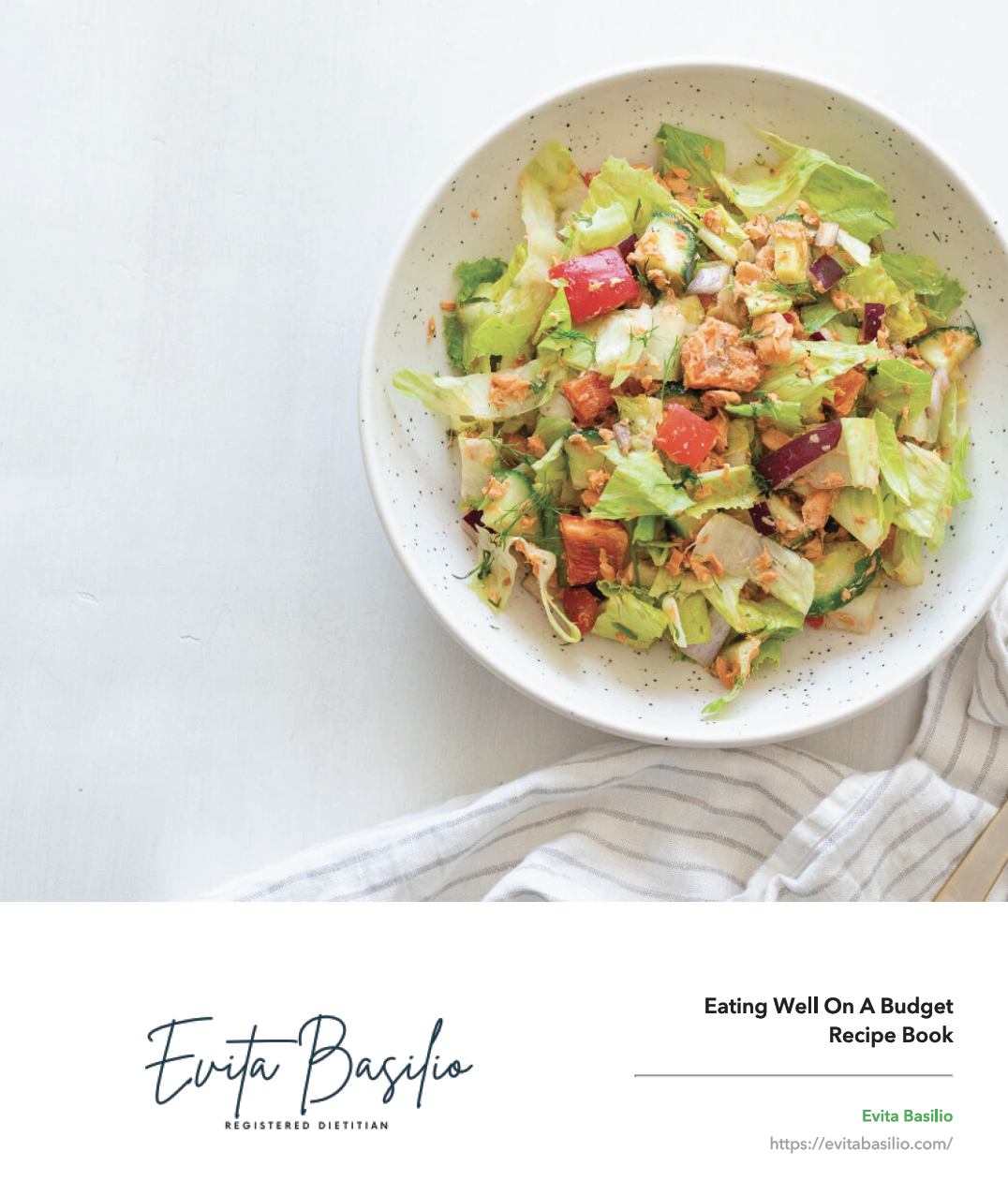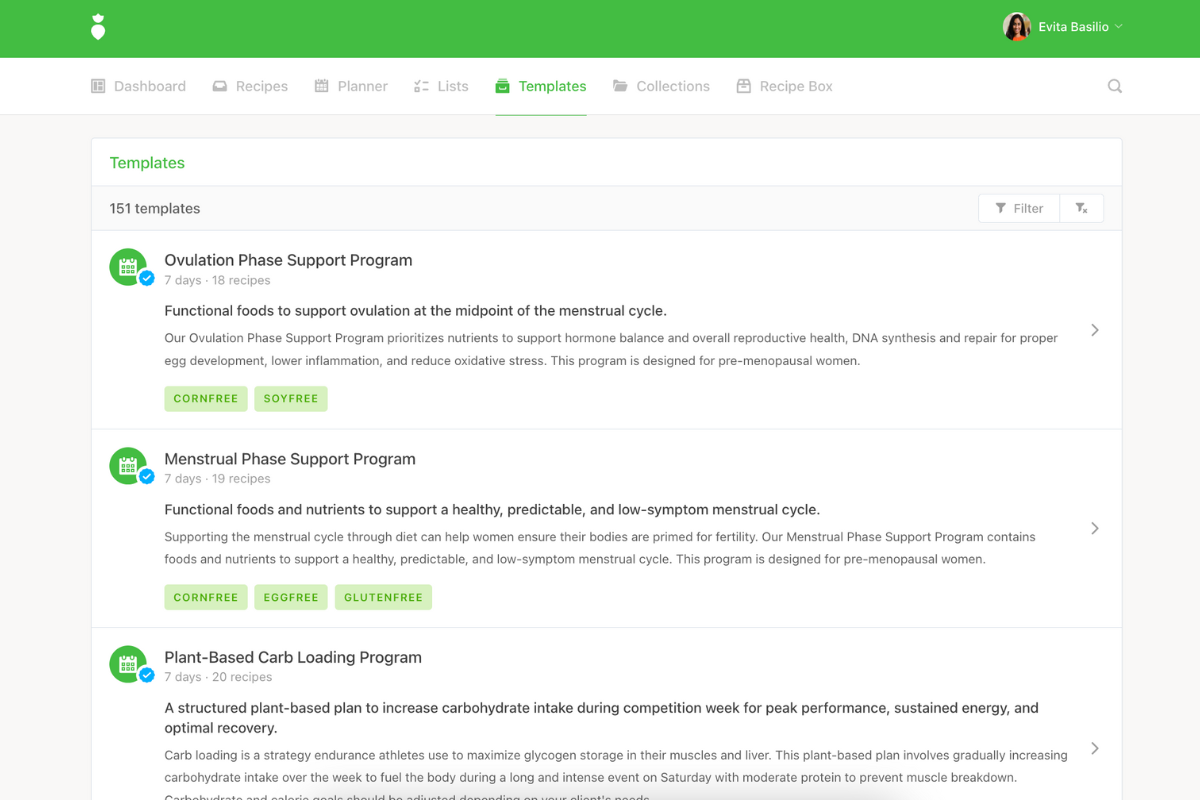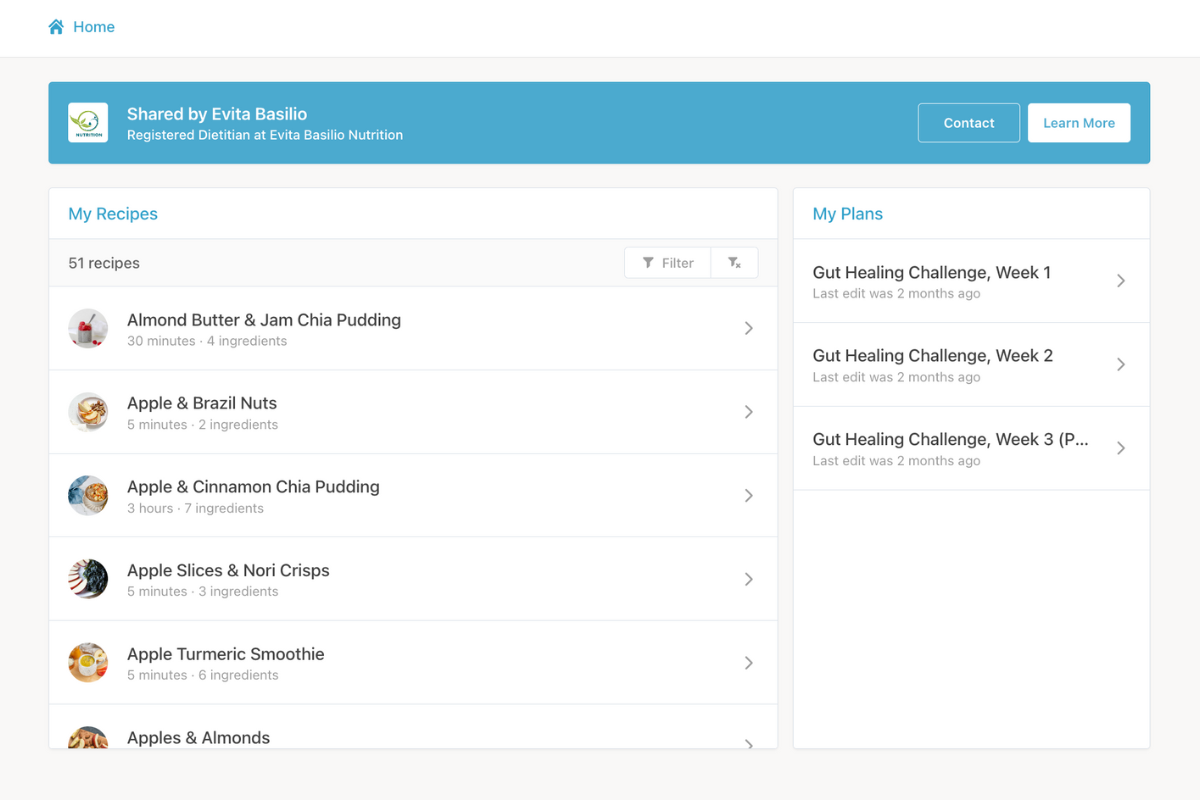In today’s competitive nutrition industry, building a successful practice goes beyond credentials—it's about creating lasting connections with the right audience. Heather Neal, the founder of Dietitian HQ, understands this better than most.
Through her leadership in developing the RD Entrepreneur Symposium and the Dietitian HQ Society, a mastermind group dedicated to empowering dietitians, Heather has made it her mission to help her colleagues build successful, sustainable businesses while striking that ever-so tricky work-life balance.
In this article, we'll dive into some of Heather's key strategies, including:
- Why you should prioritize growing your email list
- How to stay top of mind with the leads on your list
- Effective ways to nourish those leads into loyal clients
With these helpful tips, you'll not only grow a more engaged and consistent client base, but you'll also set your business up for success for years to come.

Why your email list matters
Your email list is a powerful tool for building relationships and growing your business. Here’s why:
You own the list.
An email list is one of your business's most valuable assets because you own it outright. Unlike social media platforms like Facebook, Instagram, or Pinterest, where you're at the mercy of ever-changing algorithms that decide who sees your content, your email list lets you directly connect with your intended audience.
This means you can communicate with them whenever you want, without stressing over your message getting buried in a busy feed or limited by a platform's algorithm. Simply put, an email list allows you to build and maintain a steady, dependable connection with your audience, so your business remains top of mind, no matter how social media trends change.
You can nurture leads with targeted content.
It can be tough on various social media platforms to get your content in front of the people you want to reach. But with an email list, you don’t have to worry about that. Your message goes straight to their inbox, so you know it's being seen.
Additionally, with an email list, you can get specific by grouping your subscribers based on their interests in a certain topic, event, or type of program. This way, you can send the right content to the right people, giving them exactly what they want to know more about.
“Instead of just fire-hosing them with a whole bunch of information hoping they might be interested here and there, by basing your email list on what your audience wants to know more about, you can get really specific with what you’re sharing.”
Not everyone will buy right away.
Not everyone will buy right away, and that's perfectly normal! This is where your email list will come in handy. Your email list will allow you to maintain a connection with potential clients who might not be ready to commit right away.
Instead of losing touch after a brief interaction, like seeing a Facebook post or a flier, you can stay in their minds through regular, valuable content. Over time, as their needs or circumstances change, your consistent presence in their inbox can prompt them to take action when they're ready for your services or program. It’s like having a gentle reminder system that helps keep you on their radar.
3 steps to nourish leads once they join your email list
A lead magnet is an important tool for attracting and capturing potential leads because it provides something of value to your audience in exchange for their contact information.
Tip: Download The Ultimate Guide to Attracting Clients in Your Private Practice to optimize your marketing strategy.
Nourishing leads effectively involves the following 3 steps: first, delivering a valuable lead magnet to capture interest; next, sending a welcoming series of messages to engage and build rapport; and finally, developing a nurture series to foster long-term relationships and guide leads to make a purchase.
1. Deliver lead magnet.
Delivering a lead magnet is where it all starts when it comes to nurturing potential leads. Think of it as a way to grab their attention by offering something that really speaks to their needs or interests. This initial step gets them interested and encourages them to dive deeper into what you offer.
You can deliver a lead magnet through a thank you page or via email. On a thank you page, simply provide an immediate download link after someone submits their contact information. Alternatively, you can use tech tools to trigger an automated email with a link to access the lead magnet.
2. Send welcome series.
A welcome series of emails is a great way to help nourish your leads. This series will help introduce your brand, set the stage for what’s to come, and offer useful content that builds trust and keeps your audience engaged. Plus, staying in touch can help turn these initial interactions into long-term relationships and boost your chances of converting your audience into loyal customers.
Your welcome emails should be a series of 1 to 3 emails, that are spread over a period of about 1 to 2 weeks. The first email should be sent immediately after the lead signs up, welcoming them and delivering the lead magnet or initial offer.
Then, follow up with the second email a few days later, providing additional valuable content or further explaining your services. Lastly, send the final email in the series about a week after the second one, with a more detailed offer or a call to action, encouraging them to take the next step.
“The purpose of the email welcome series is to make them like you and provide value. So it's setting yourself apart, making them know that you understand what they're going through and that you are ready to help them with your service or your product.”
The content in your welcome series should really connect with your audience. For example, you might include popular blog posts related to your lead magnet that are both relevant and useful to your audience.
You may also consider sending out a meal plan for different dietary needs. According to Neal, you’ll want to help them “apply that meal plan to their daily life.”
“It might be helpful to provide some meal planning tips and examples of what it looks like in practice. Consider showing them how to get the most out of the free resources you've given them. Additionally, you could offer some follow-up information that goes more in-depth on the topic.”

Don’t forget to add a final call to action in the last email of your welcome series. This is your chance to invite leads to take the next step. Whether it’s working with you, hiring you, or making a purchase, this simple move can help turn interested leads into paying customers.
3. Build a nurture series.
Sending a regular email newsletter is a great way to build a nurture series to help nourish leads and keep them engaged. The key is to choose a frequency you can stick with, whether that’s weekly, biweekly, or monthly, and maintain consistency. As Neal advises, “I don't want you to send an email three weeks in a row and then get caught up in things, and you don't send another one for three months.”
To set up your newsletter, you have two main options. First, you can write and send emails regularly. For example, you might choose to send an email every Monday to your entire list or to specific segments that would benefit from the content.
Alternatively, you can create a series of emails in advance and use tech tools to set them up in your email system. As Neal puts it, “You can write a series of emails and put it into your email system as an automation, similar to when you delivered your lead magnet.” This approach allows your newsletter to reach your audience consistently, even when you’re busy.
The following are the wide range of content examples you can include in your email series:
- A personal story is particularly good if you can relate to your ideal client.
- Client story—Sharing a real-life example of how your services made a difference can help your audience relate and see the value firsthand.
- Testimonials—Here, you can showcase real feedback from satisfied clients, adding credibility and making your services more compelling.
- Research—By sharing interesting findings or statistics that relate to your audience in a digestible and fun way, you can help add credibility and value to your content.
- Recipes—Here, you can share easy-to-make options that align with your advice, giving your audience practical ways to apply what they’ve learned.
- Myth busters—By addressing common misconceptions and setting the record straight, you can help your audience make better decisions with more accurate information. Examples of busting myths in the world of nutrition may include "why you can’t live on 1200 calories forever”, or “why fat isn’t bad”.
- Blog posts—By sharing your blogs, you’re giving your audience deeper insights and helpful tips on topics they care about.
- Resource library—You can share different resources, such as lead magnets, freebies, and guides, and bundle them together so your audience can explore this information at their own pace.
- Sample meal plans—Everyone loves a meal plan, and offering easy-to-follow options can help your audience implement your nutrition advice.
Tip: That Clean Life offers 150+ done-for you meal plans and 6,700+ recipes to save time and jumpstart your content creation.

You may also consider including bonus nurture actions like free workshops where “you teach them a little about what you do. So you take a small portion of the topic you teach or work on with clients, and you share it for free in a workshop.” Neal also suggests hosting a challenge: “For three days, you could cover a certain topic and explain how you’re going to do a 21-day challenge on this topic.”

Why people don’t buy and what to do about it
Despite your best efforts, there are plenty of reasons why people might not buy from you. Maybe your product or service isn't the perfect fit for them, the timing isn't right, their problem doesn’t feel urgent enough yet, or they’re not ready financially.
Not the right fit.
Sometimes, you might not be the best fit, and that's absolutely okay. Recognizing when someone isn't the right match is important as it saves both you and your potential client from a less-than-ideal experience.
“It’s not that you’re trying to make everybody buy from you. It’s that you are serving the people that are a good fit to work with when it’s the right time.”
Not the right time.
If it’s not the right time for a potential client, your job is to be there for them when the time is right.
“So maybe it wasn't the right time when they downloaded that lead magnet, but maybe a couple of weeks or a couple of months later, it is, so your job is to still be relevant and top of mind.”
Their problem wasn’t urgent/bad enough (yet).
By nourishing your leads, your potential clients know that you’re ready to step in with your service when they need a solution to their problem.
They’re not financially prepared.
Your job is to be there when they are financially ready or provide an alternative offer. Neal explains, “Maybe you had a higher-priced signature service or program that they are not going to commit to, but you also have a self-paced course, an ebook, or another lower-priced service that would be a good fit for them.”
Tip: Learn more about the importance of multiple revenue streams.
The bottom line
Email marketing can be a game-changer for your growth strategy because it helps you stay in touch with your audience in a personal way, keeping them engaged and excited about what you have to offer.
It’s a powerful tool for building relationships, sharing valuable content, and driving more meaningful interactions that can help grow your business.
Ready to take your private practice to the next level? Download The Ultimate Guide to Attracting Clients today and get the tips you need to grow your practice with marketing strategies from the top health professionals.
